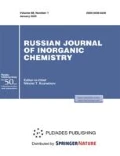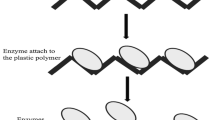Abstract
Biodegradation is an important method for the purification of industrial sewage and environment from chemical wastes. The biodegradation of elemental yellow (white) phosphorus was observed only in our studies. It is one of the most hazardous contaminants of environment. White phosphorus and its transformation products are used in industry, agriculture, drug manufacture, and military. For the first time, we have obtained cultures of microorganisms growing in media containing white phosphorus in concentration much higher than the threshold limit concentration in sewage. Elemental phosphorus is the strongest poison as reduced compounds and phosphate esters. However, in completely oxidized state (inorganic phosphates) it is a biogenic element necessary for all forms of life. Earth biomass consists of phosphorus almost by 3%. Prospects of the biodegradation of toxic phosphorus compounds, and elemental phosphorus are huge. The practical implementation of new deactivation method showing a number of advantages will allow one to reduce considerably fines imposed on plants producing and consuming yellow phosphorus.


Similar content being viewed by others
REFERENCES
S. Saraswat, J. Bioremed. Biodeg. 5, 1 (2014). https://doi.org/10.4172/2155-6199.1000251
R. U. Meckenstock, M. Elsner, C. Griebler, et al., Environ. Sci. Technol. 49, 7073 (2015). https://doi.org/10.1021/acs.est.5b00715
Q. Do, G. T. Nguyen, and R. S. Phillips, Amino Acids 48, 2243 (2016). https://doi.org/10.1007/s00726-016-2263-7
L. Pereira, A. V. Coelho, C. A. Viegas, et al., J. Biotechnol. 139, 68 (2009). https://doi.org/10.1016/j.jbiotec.2008.09.001
R. M. Atlas, Microbiol. Rev. 45, 180 (1981).
M. Otzen, C. Palacio, and D. B. Janssen, Appl. Microbiol. Biotechnol. 102, 6699 (2018). https://doi.org/10.1007/s00253-018-9073-7
A. Grandcoin, S. Piel, and E. Baures, Water Res. 117, 187 (2017). https://doi.org/10.1016/j.watres.2017.03.055
K. J. Knowles, Bacteriolog. Rev. 40, 652 (1976). https://doi.org/10.1007/s10482-006-9057-y
K. Furukawa and H. Fujihara, J. Biosci. Bioeng. 105, 433 (2008). https://doi.org/10.1263/jbb.105.433
D. N. Grishchenko, A. B. Slobodyuk, V. G. Kuryavyi, et al., Russ. J. Inorg. Chem. 65, 1606 (2020). https://doi.org/10.1134/s0036023620100083
G. M. Mukhametova, E. G. Vinokurov, E. S. Babusenko, et al., Izv. Vyssh. Uchebn. Zaved., Khim. Khim. Tekhnol. 61, 89 (2018).
Yellow Phosphorus Market: Production Capacity Reach to 1.87 Million Tons in 2019 (HDIN Research, 31.10.2019). https://www.hdinresearch.com/news/36
M. E. Walsh, C. M. Collins, and C. Racine, Environ. Toxicol. Chem. 15, 846 (1996).
S. L. Vann, D. W. Sparling, and M. A. Ottinger, Environ. Toxicol. Chem. 19, 2525 (2000). https://doi.org/10.1002/etc.5620191019
U. Aviv, R. Kornhaber, M. Harats, et al., Disaster Mil. Med. 3, 1 (2017). https://doi.org/10.1186/s40696-017-0034-y
von J. R. Van Wazer, Phosphorus and its Compounds (Interscience Publishers, New York–London, 1958).
A. I. Kal’noi, S. V. Tarasov, F. A. Katunin, et al., Nauka Voen. Bezopasn. 4, 13 (2017).
C. C. Cummins, Daedalus 143, 9 (2014). https://doi.org/10.1162/DAED_a_00301
E. Takeda, Y. Taketani, N. Sawada, et al., BioFactors 21, 345 (2004). https://doi.org/10.1002/biof.552210167
A. A. Tsyganova, O. A. Golovanova, and A. N. Elovsky, Russ. J. Inorg. Chem. 65, 975 (2020). https://doi.org/10.1134/S0036023620070220
L. R. Gray, S. C. Tompkins, and E. B. Taylor, Cell. Mol. Life Sci. 71, 2577 (2014). https://doi.org/10.1007/s00018-013-1539-2
H. Ma and X. Feng, Chem. Engineer. Transact. 61, 451 (2017). https://doi.org/10.3303/CET1761073
S. Li, J. Yang, C. Wang, et al., Energy Fuels 32, 5279 (2018). https://doi.org/10.1021/acs.energyfuels.7b03964
P. Ning, X. Wang, H.-J. Bart, et al., J. Cleaner Prod. 19, 1547 (2011). https://doi.org/10.1016/j.jclepro.2011.05.001
A. Z. Mindubaev, F. K. Alimova, A. D. Voloshina, et al., RF Patent No. 2603259 (November 1, 2016) Byull. Izobret. 33 (July 28, 2015).
A. Z. Mindubaev, A. D. Voloshina, E. V. Babynin, et al., Ekol. Prom. Rossii 22, 33 (2018). https://doi.org/10.18412/1816-0395-2018-1-33-37
A. Z. Mindubaev, S. V. Kuznetsova, V. G. Evtyugin, et al., Appl. Biochem. Microbiol. 56, 194 (2020). https://doi.org/10.1134/S0003683820020118
Funding
This work was financially supported by the Russian Foundation for Basic Research (project no. 14-08-31091 mol_a) and the Foundation for Assistance to Innovations (project no. 39113, application no. C1-34299).
Author information
Authors and Affiliations
Corresponding author
Ethics declarations
CONFLICT OF INTEREST
The authors declare that they have no conflicts of interest.
ADDITIONAL INFORMATION
This paper was reported on the Sixth Interdisciplinary Scientific Forum with International Participation “New Materials and Promising Technologies”, Moscow, November 23–26, 2020, https://n-materials.ru.
Additional information
Translated by I. Kudryavtsev
Rights and permissions
About this article
Cite this article
Mindubaev, A.Z., Babynin, E.V., Bedeeva, E.K. et al. Biological Degradation of Yellow (White) Phosphorus, a Compound of First Class Hazard. Russ. J. Inorg. Chem. 66, 1239–1244 (2021). https://doi.org/10.1134/S0036023621080155
Received:
Revised:
Accepted:
Published:
Issue Date:
DOI: https://doi.org/10.1134/S0036023621080155




